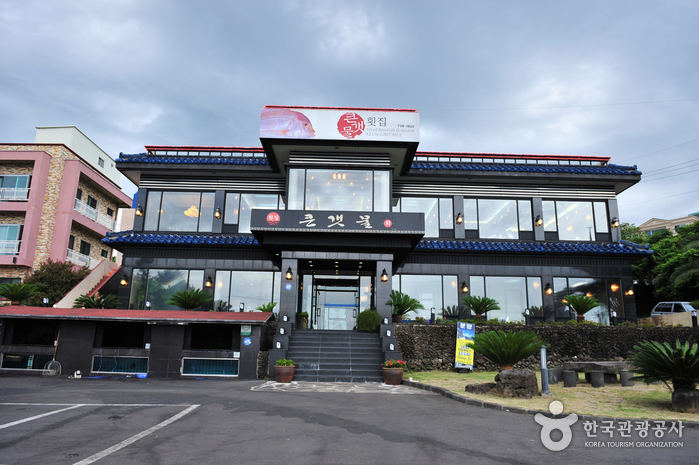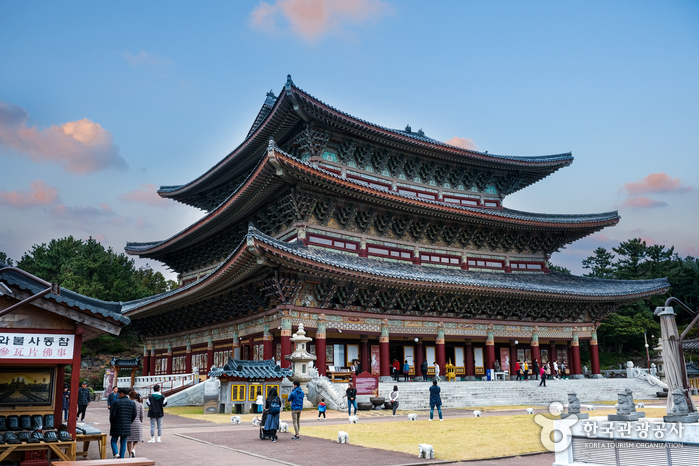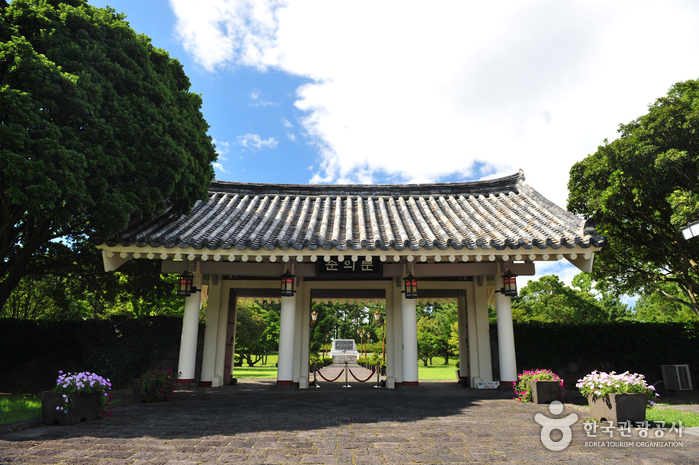Keun Gaetmul Hoetjip (큰갯물횟집)
18.9 Km 8452 2019-05-22
161, Daepo-ro, Seogwipo-si, Jeju-do
+82-64-738-1625
Located in Daepohang Hoe Town, an area where ‘hoe’ (sliced raw fish) restaurants are gathered, is Keun Gaetmul Hoetjip, a two-story modern restaurant with a large parking space and a great view of the ocean.
The exceptionally hygienic condition of the restaurant and the kitchen is quite impressive.
Ivar Garden (아이바가든)
19.1 Km 0 2024-04-19
8 Goseongnamseo-gil, Aewol-eup, Jeju-si, Jeju-do
Ivar Garden is an immersive media art exhibition hall in Aewol-eup on Jeju’s northwest coast. The hall is divided into eight exhibition spaces, each with a unique theme like Dreamy, Industrial, Mystery, and Party. The exhibitions extend all the way to the floor and the ceiling for a fully immersive experience.
Jungmun Equestrian Park (중문승마공원)
19.2 Km 0 2024-01-09
244 Ieodo-ro, Seogwipo-si, Jeju-do
Jungmun Equestrian Park is where visitors can experience horseback riding while looking at the sea, and even beginners can enjoy horseback riding without any concerns. Visitors can choose between a walking course that takes 10–15 minutes and a Beach Olle course that takes 20–25 minutes. The Beach Olle course has a beautiful ocean view and reaches its peak in spring when canola flowers are in full bloom. It is operated under a reservation system in principle, but walk-in is also accepted on a first-come,first-served basis. Visitors are advised to call in advance as programs are subject to cancellation in case of adverse weather.
Jeju Yakcheonsa Temple (약천사(제주))
19.4 Km 59604 2024-03-12
293-28, Ieodo-ro, Seogwipo-si, Jeju-do
+82-64-738-5000
Jeju Yakcheonsa Temple is the largest temple in Asia. Originally a small hermitage named Yaksuam, it was named Yakcheonsa because of a famous mineral spring ('Yaksu') nearby. It enshrines tombstones of two royal couples from the Joseon Dynasty: King Munjong and his consort, and King Yeongchin and his consort. The temple also offers temple stays for both Koreans and foreigners.
Historic Site of Anti-Mongolian Struggle in Hangpadu-ri, Jeju (제주 항파두리 항몽 유적)
19.6 Km 27533 2022-08-18
50, Hangpaduri-ro, Jeju-si, Jeju-do
+82-64-710-6721
Historic Site of Anti-Mongolian Struggle in Hangpadu-ri is where the Sambyeolcho military unit of the Goryeo dynasty resisted the invasion of Mongolia until the last possible moment. The site houses an
exhibition hall, a monument, and a unique mud fortress. Nearby is Jangsumul Spring (Jangsu means general) which flowed from the footprints of General Kim Tong-jeong. Today, water from the spring
cannot be used as drinking water.
Sambyeolcho was a military unit of the Goryeo dynasty. When the Goryeo dynasty made peace with the Mongolian forces in February 1270 (the 11th year of King Wonjong), the Sambyeolcho special defense unit opposed it and launched a resistance movement. They moved their base to Jindo in Jeollanam-do, but after suffering a huge defeat, they moved to Jeju-do and built Hangpaduseong Fortress. They continued to fight against the Mongolian forces for two more years there. However, all the members were killed in April 1273 (the 14th year of King Wonjong).
This independent anti-Mongolian movement was born out the deeply patriotic belief in the need to safeguard the nation from foreign invasion. In 1977, the government invested 745 million won to restore part of the fortress and build a monument in commemoration of those who died in the war. The work was completed in June 1978.




 English
English
 한국어
한국어 日本語
日本語 中文(简体)
中文(简体) Deutsch
Deutsch Français
Français Español
Español Русский
Русский